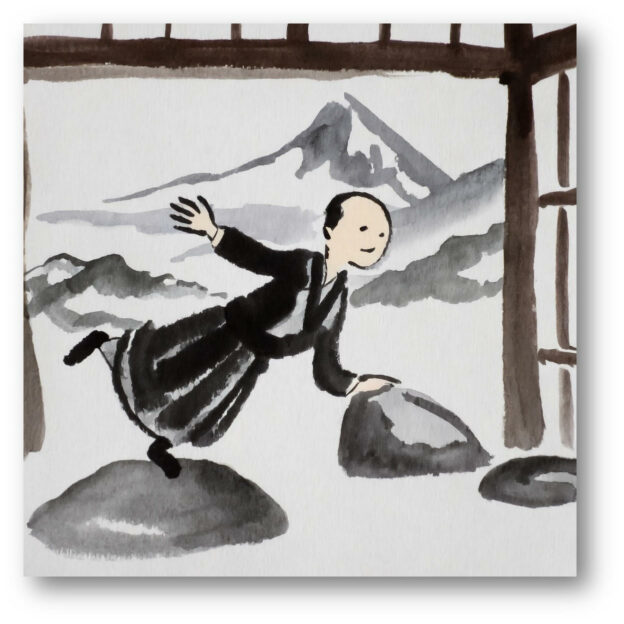The title of this is a question I was asked online about a year ago, and I’ve just stumbled across my answer to it. We touch on the idea of ritual, ceremony and ‘the form’ from time to time in Northampton, especially when people come to their first sit with a service! Usually, I answer in various ways depending on the context and the person asking. On this occasion, not knowing the questioner, this is how I responded:
My answer is from the viewpoint of a Western Zen priest/monk who lives a lay life and yet still wears robes on meditation retreats (sesshin) and for a few other meditation sessions during the year (usually when also conducting service). My reasons for wearing my robe are complex and I don’t claim to have thought them out fully, but for what it’s worth…
- Because it’s expected of me. I put this first just to get it out of the way – it’s probably the least important, but that being said, if I pitch up to a meditation period on retreat without wearing my robes, I’d be asked to explain why (I might even have a good reason!). All that said, there’s a remarkable freedom in the restrictions of the monastic regime we maintain during sesshin, as contradictory as that might sound. A freedom from having to choose what to do, what to wear, what to say, what to eat… we voluntarily submit to such a strict regime and find ourselves frequently surprised by how free we feel from the tyranny of everyday decisions!
- I practice Zen in a lineage that, like most Zen groups, traces our ‘bloodline’ back through generations of teachers all the way to the Buddha (and yes, I’m fully aware that some of this is mythological, some hagiographical, and some outright lies for political purposes in ancient China!). Part of this is that we’ve been handed down this practice in a particular form – we sit in a certain way, we chant certain texts, we conduct ourselves in the meditation hall in a certain way… and we dress in a certain way. Again, this ‘mere tradition’ is not terribly important to me, but expands into…
- I keep the traditions, including wearing the robes, mainly as an expression of my ongoing gratitude to teachers and my dharma ancestors. My robes, for me, are a material expression of that gratitude, and a determination to continue the endless work to fulfil our vows, to end suffering and to save all sentient beings. I cannot express how important this aspect of robe wearing is for me.
- Other people’s projections. We wear the robes not just for ourselves but also for other people. Putting on the robe for the first time during my tokudo ceremony was very moving: it was an outward expression of my commitment to service to the sangha – both in the local and universal sense. When I wear the robes, I represent not myself but something else, and ideal I suppose, and it’s very interesting to observe others’ responses to this. I’ve seen responses from surprised (“What the f*** is that?” – inmate during prison visit!) to respect (being called ‘father’ by a well-meaning Catholic lady at a public interfaith event was memorable) to outright veneration. I was surprised and initially very uncomfortable when visiting a Thai patient in a mental health hospital who bowed down and touched her head to my feet – until I realised it was nothing to do with me but the robes and what they meant to her, even if not the saffron robes she was probably used to seeing. On a more prosaic level, wearing the robes within our own sangha marks one out as, I hope, someone who’s been in the practice for a while and who can provide support and spiritual friendship.
- As part of my practice. My jukai preceptor has often talked about the robes as teaching us – physically wearing them, all those layers and ridiculously long sleeves etc, with the kesa arranged just so over the top, is demanding! You can’t wander about mindlessly in robes like you can in a t-shirt and trackie bottoms. You can’t even hang your hands down by your side, but must be continually in shasshu, hands clasped in front of you, to keep your kesa and koromo sleeves off the ground. Even walking through a door mindlessly can be a hazard – the number of times my sleeve has caught in a doorhandle as I’ve passed through and spun me around…! Especially in the Zendo, making sure your kesa doesn’t touch the ground, trying to move quietly and nobly through this special space while managing metres and metres of material… it’s fascinating how much I’ve learned about the way I normally move because of wearing the robes.
Bound to be others… think I’ve probably bored you enough by now. But I hope that I’ve given you the impression that wearing the robes is a psychologically rich and complex matter, and not something that one enters into lightly.

